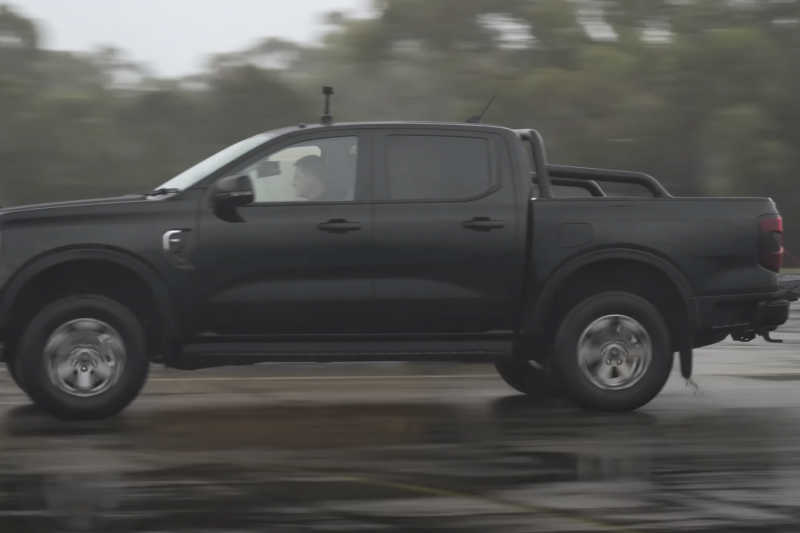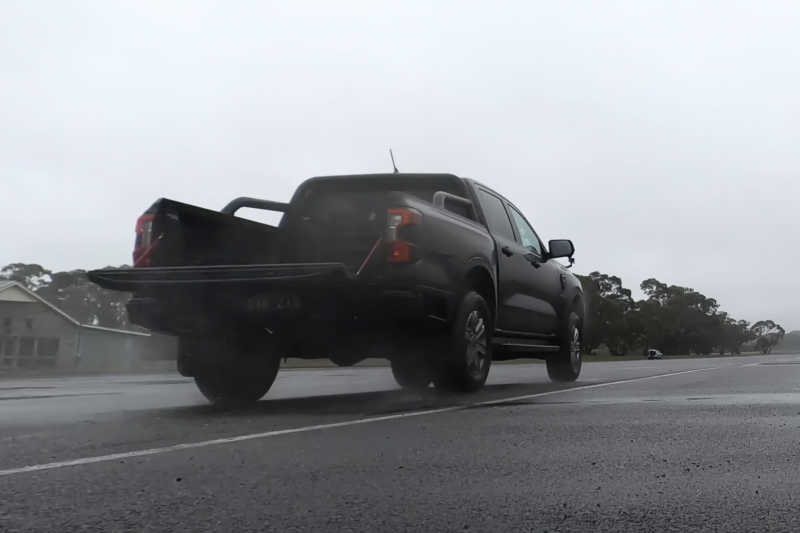A drop-down tailgate – such as what you find on a pickup truck tub, a ute tray, or in some vans, hatchbacks and wagons – is designed to hold a load in place. It, in combination with the sides and headboard of the load area, are made to do a job.
Sometimes, however, you might find you need a bigger space, and the easiest option for that is to lower the tailgate.
- Overloading is a big concern for other road users
- In most situations it’s okay to have your tailgate down
- Make sure your numberplate and tail-lights are still visible
You’ll often see pickups with dirt bikes in the back, or work utes with the back of the tray open to allow extra load space. And this is, it appears, perfectly legal.
You must ensure that your vehicle’s rear number plate remains visible – this is a road safety consideration, and no matter which state or territory you’re in, the police don’t take kindly to not being able to see your rego details.
Further, you have to ensure that other road users can still see your tail-lights. Anyone travelling behind should be able to see when you’re braking, indicating, or just be able to position you on the road if you’re driving at night.
There are plenty of specific rules around loading vehicles. Overloading is a chronic problem, and we’ve all seen the stray piece of steel or plumbing pipework on the freeway, because Jim the Tradie didn’t secure his load correctly.
The reality is, not securing your load is a serious road safety issue. That’s partly why police have cracked down on utes without mesh nets to cover the load area, as stuff can fly out at speed, and that can cause havoc for those travelling behind your vehicle.
If you’re wondering how much you’re allowed to have stuff sticking out, you should check out the Load Restraint Guide for Light Vehicles (2018). It contains the laws that Queensland, New South Wales, Victoria, Tasmania, South Australia and the Australian Capital Territory refer to.
In those jurisdictions, the rear overhang is measured from the rear axle. It’s limited to whichever is the lesser value – 60 per cent of the wheelbase of the vehicle, or 3.7 metres from the rear axle.
The wheelbase is the distance between the front and rear wheels. And for example, it measures 3220mm in a Ford Ranger. So, that would mean you’re either allowed to have an overhang 1932mm measured from the rear axle, or 3.7 metres from that point, whichever is lower.
In Western Australia the rule is different, with the so-called “rear projection” law, which states that a vehicle can have an overhanging load of up to 1.2 metres from the rear of the vehicle.
You also need to ensure that other road users can see your overhanging load.
“Loads with a projection that is not easily seen from behind the vehicles, or with a rear projection greater than 1.2m (all States and Territories except Western Australia) must attach warning signals to the end of the rear projection,” the guidelines say.
“During the day – a flag/material which is brightly coloured and at least 300 mm long; at night – a red light that can be seen from 200m away.”
The Load Restraint Guide (2004), which is the performance standard that applies to WA and the Northern Territory, offers some sage logic in terms of vehicles and loading up.
“Vehicles carrying long loads should be long enough to avoid excessive overhang and to ensure good weight distribution for vehicle stability,” the booklet states.
That document further offers some terrific advice about load security:
Loads must be restrained to prevent unacceptable movement during all expected conditions of operation. The load restraint system must, therefore, satisfy the following requirements:
- The load should not become dislodged from the vehicle.
- Any load movement should be limited, such that in all cases where movement occurs, the vehicle’s stability and weight distribution cannot be adversely affected and the load cannot become dislodged from the vehicle.
Loads that are permitted to move relative to the vehicle include loads that are effectively contained within the sides or enclosure of the vehicle body such as:
- Loads which are restrained from moving horizontally (limited vertical movement is permissible);
- Very lightweight objects or loose bulk loads (limited horizontal and vertical movement is permissible);
- Bulk liquids (limited liquid movement is permissible);
To achieve this, the load restraint system must be capable of withstanding the forces that would result if the laden vehicle were subjected to each of the following separately:
- 0.8 ‘g’ deceleration in a forward direction,
- 0.5 ‘g’ deceleration in a rearward direction,
- 0.5 ‘g’ acceleration in a lateral direction,
- and to 0.2 ‘g’ acceleration relative to the load in a vertical direction.
Not intended as legal advice. Check with the relevant roads authority in your state or territory.






